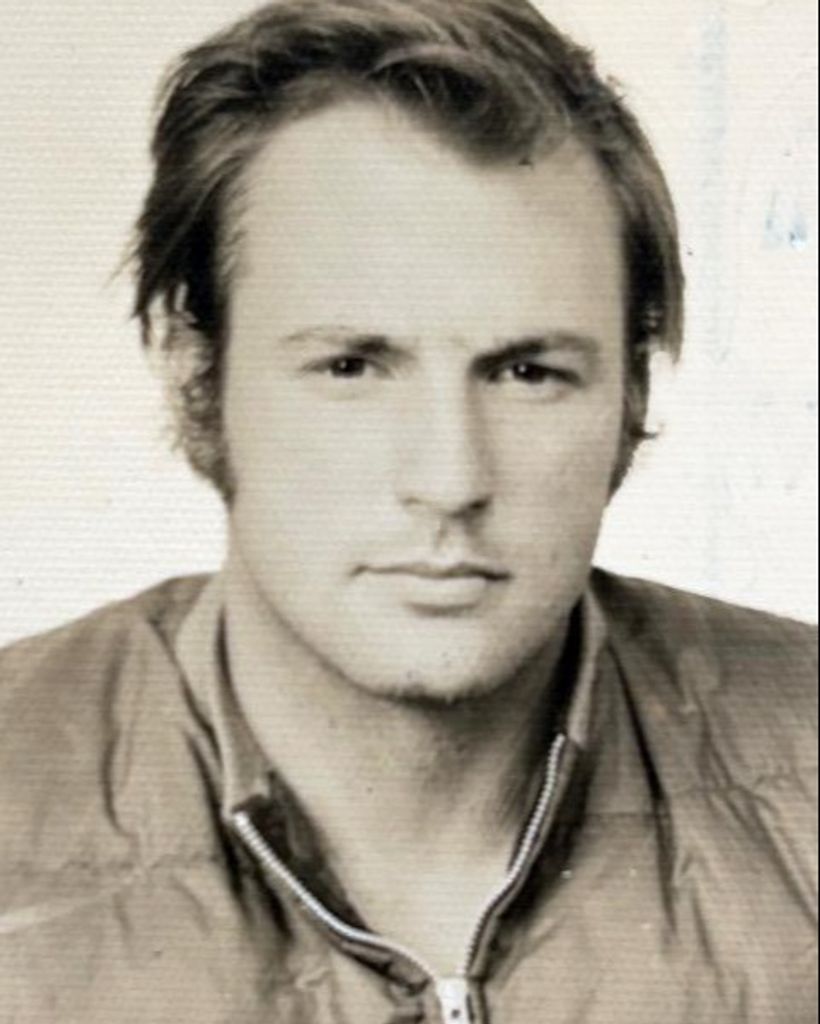

Phillip Marvin Vaughan
September 4, 1952 — January 5, 2025
Richmond
Phillip Marvin Vaughan was born on September 4th, 1952, in Santa Barbara, California, to Edwin Marvin Vaughan and Mary Josephine (née Dickhaut) Vaughan; he died on January 5th, 2025, at the Colonial Rehabilitation and Nursing Center in Colonial Heights, Virginia.
Phillip was predeceased by both of his parents. He is survived by his loving son Nathaniel (Rebecca) and grandson, Valentine, (Sabah, Malaysia) and his former spouse Susan Abbot Arisman. Also, by his brothers Edwin Timothy Vaughan (Mary) (Myrtle Beach, SC) and Christopher Stephen Vaughan (Ana) (San Pedro, Montes de Oca, Costa Rica), and his sister Agatha (“Vicki”) Baker (Dan) (Boulder, CO) and by nephews and nieces Andrés, Catalina, Cristina, Jessica, Katherine, Kirsten, Michael, and great-nephews and great-nieces Andrew, Lena, Maria, Melina, Mo Michelle, and Timothy Aidan.
Phillip attended Bettendorf High School in Bettendorf, Iowa, where he was a competitive wrestler and starred in the school’s musical productions, and from there he graduated in 1969.
In 1970, Philip made the short documentary “Children and Trees” (link below) about the destruction of a beloved old-growth forest he had explored as a child. In early 1971, after having received a formal invitation from the President of the United States, he presented this film as a delegate to the “White House Conference on Children and Youth” (the first Conference solely devoted to youth that the White House had ever sponsored) in mid-April in Estes Park, Colorado, subsequently touring the U.S. with it, promoting the cause of conservation; colleges and universities which he visited include Amherst, American University, The University of Iowa, Grinnell College, Smith College, and Hampshire College. (This movie also appears under the auspices of the Harpers Ferry Historical Association National Park Service Films.)
https://texasarchive.org/2017_02937
From the introduction: “What you are about to see is one young man’s violent reaction to the violation of a forest land he loved. Phillip Vaughan of Bettendorf, Iowa, put his statement on film; his burning resentment became a creative act of humanity – a cry of human protest. Phillip’s film is more than a plea against putting concrete convenience ahead of higher human values. It is a plea for men to be men – not mere extensions of their technology.”
In the summer of 1969, Phillip attended the National High School Institute of Speech at Northwestern University in Evanston, Illinois and was awarded highest honors in the Drama Division.
In early May, 1070, Phillip was awarded the Youth Conservationist of the Year at the Iowa Wildlife Federation’s Annual Conservation Achievement Awards Program in Boone, Iowa. Phillip attended Grinnell College (ecology/drama) in 1970, attended the Maryland Institute of Art (art/photography) in Baltimore, Maryland in 1972, and, in 1974-1975, he attended the University of Iowa (creative and advanced photography) in Iowa City, Iowa. Between 1992 and 1998, he attended the George Mason University (GMU) in Fairfax County, Virginia (studying English, Writing, Play and Script Writing, Design, Painting, and Theater). While there, he was a member of the Dean’s List in Spring 1997, and, in 1997-1998, a member of the Golden Key Honor Society. In 1998, he earned a Bachelor of Individualized Study Degree, graduating with Honors.
The following is excerpted from a tribute written by Phillip’s adviser/mentor at George Mason University, College of Visual and Performing Arts: “Phillip is a gifted, multi-modal artist – he is a skillful painter, and his work as a professional photographer in the early days of the Environmental Protection Agency is especially noteworthy, forming the basis of a special collections program at the American University library. Creative writing, however, is his passion and, I believe, his true vocation. I have followed Phillip’s journey as a writer since his graduation and am consistently impressed by his output, both in quantity and quality. His work, much of which blurs the line between poetry and prose, is full of striking images and felicitous phrases. It has narrative energy as well as contemplative resonance. It reads well and sounds even better when read aloud.”
Between 1989 and 1992, Phillip was a photographic equipment salesman for six months and was a substitute teacher in the Fairfax Public School System for two and a half years.
Throughout his 20’s and 30’s, Phillip pursued documentary and nature photography, with trips to Mexico, Costa Rica, and across the United States. He was employed by the National Park Service as a photographer in the Alaskan wilderness (film “Kotzebue, Innuit Capital of the Arctic”). He also created a powerful documentary-drama series (film “Hearts of Gold”) on the Pfiesteria invasion of a river in Virginia, showing the effects of the micro-organism’s effect on the lives of the people in one small town. Again, from his GMU mentor: “His thesis project was a lyrical montage composed of still photographs and original character sketches based on the residents of Virginia’s Northern Neck, created partly in response to the pfiesteria crisis that threatened the Chesapeake Bay and certain of its tributaries in 1997.”
Phillip’s photographs appear in a 1974 edition of “Audubon Magazine” (his Alaska photo opens the Alaska chapter), in Chanticleer Press’s coffee-table books “This Good Earth” and “Mountains of America”; a mural in a 1974 exhibit “The Great Land” (sponsored by Squibb Pharmaceutical Galleries) toured the United States. In 1976, his photograph of the Arrigetch Peaks of the Brooks Range of Alaska was used by the National Park Service as part of a traveling mosaic for the Bicentennial. In 1986 his photographs appeared as a solo exhibit during a Congressional Reception sponsored by the Society of Nutrition Education, and, also in 1986, his background mural of a rainforest scene was displayed on the speaker’s platform during all sessions of the World Wildlife Fund Annual Meeting.
Phillip loved the natural world and acted to protect it from abuses. His interests included drawing, painting, poetry-writing, politics, script-writing, teaching, adventurous travel (especially by train), exploring nature, playing classical and bluegrass guitar, and singing, and Tae Kwon Do, in which he held a black belt. He consistently made an effort to be gainfully employed as a substitute teacher and also to attend classes in college, and worked consistently on writing poetry and plays. Again, from his GMU mentor: “Perhaps the most important thing that I can say as an independent reference is to stress Phillip’s seriousness and dedication to his writing. His productivity has been consistent and his growth steady. He seeks feedback at important junctures as his style and subject matter evolve. He is thoughtful and reflective about his own craft and takes delight in the strong work of others.”
Unfortunately, in his later years, Philip was plagued with mental and physical challenges which he could not overcome.
On January 14th, 2025, Phillip Vaughan’s remains will be laid to rest in the Mount Calvary Cemetery in Richmond, Virginia.
May his soul rest in peace and may his memory be eternal
Guestbook
Visits: 423
This site is protected by reCAPTCHA and the
Google Privacy Policy and Terms of Service apply.
Service map data © OpenStreetMap contributors



